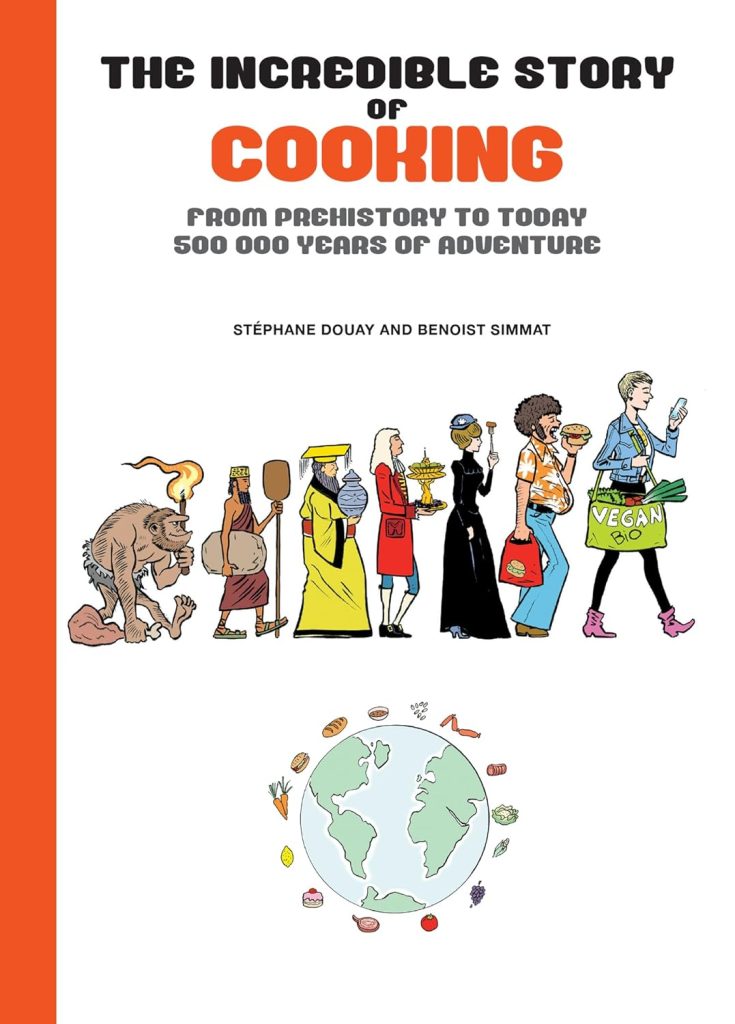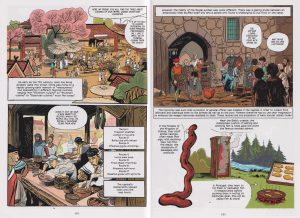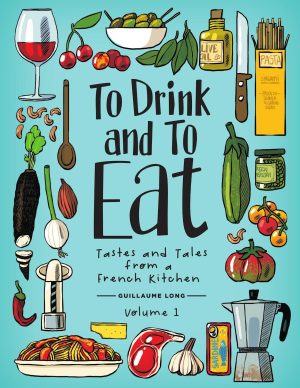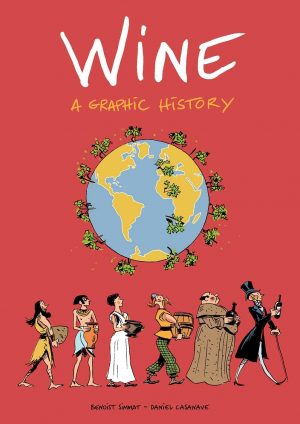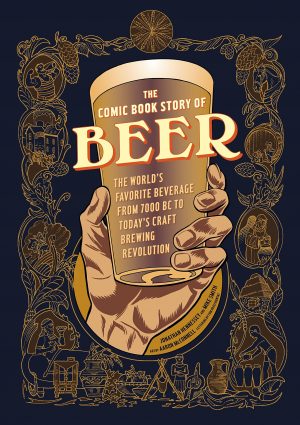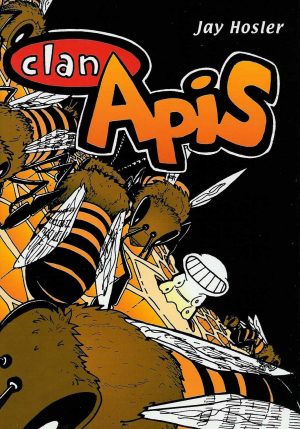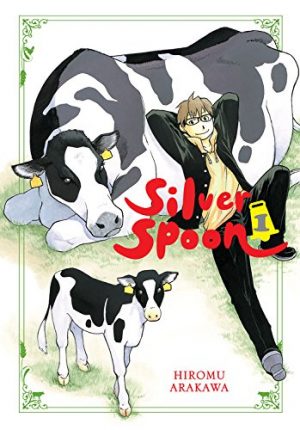Review by Frank Plowright
It might be assumed that covering the history of cooking in just over 230 illustrated pages is setting a formidable challenge, but author Benoist Simmat and artist Stéphane Douay are a formidable creative presence providing a densely rich educational meal. It ends with recipes from around the world, some dating back millennia.
Douay’s astute cover illustration supplies the internal chronology, beginning in prehistoric times when every meal was hunted, and ending with today’s advice that eating habits need to change. Their method follows the path of other French educational graphic novels with humorous cartooning, and gags in every panel that isn’t explanatory, while the definition of cooking also encompasses baking, brewing, dining habits, nutrition and the gradual industrialisation of food. Social engineering even gets a look in.
All food was eaten raw until the discovery of fire estimated to be around 1.7 million years ago, with meat stew identified as perhaps the world’s oldest recipe. The invention of some food techniques such as drying, freezing and adding seasoning dates back far further than you might presume, predating both domestication and crop cultivation. When cities developed, techniques improved and progressed rapidly, including the use of eating utensils, although forks weren’t regularly used in Europe until the 15th century.
While the journey through the ages can be described, it really requires experiencing, and Simmat is a knowledgeable guide who’s researched extensively. Most people probably haven’t given a great deal of thought to the history of cooking, so he’s able to surprise again and again with his snippets of information. Here are a few: blood was once a common condiment in Mesopotamia; the first known vegetarian was Pythagoras; Aztec culture was primarily vegetarian, the exception being the hearts of their human sacrifices, while the dining habits of Louis XIV in the 17th century define power and decadence. Simmat shows how different styles of cooking developed in different areas of the world until trade liberated cooking. Also continually surprising is the origin of various recipes. Scrambled eggs? Iranian.
Douay’s cartooning is deliberately simple throughout, and covers massive differences in culture extremely well. The only times it doesn’t serve its purpose is when meals are lavish and more detail would better sell the occasions. As each culture is explored, illustrated diagrams note the new foods unique to that region, and although many panels contain jokes, Douay presents relatively normal illustrations, with the jokes supplied in the dialogue. An exception is his funny illustrations of Europeans experiencing hot peppers for the first time.
Once the salvation of the poor, in more recent years cooking’s industrialisation has come to be viewed as a bad thing, poor diet leading to big profits and bad health, and the final few pages consider healthier trends. British readers may be confused by the American term “chips” applied to crisps.
Anyone whose interest is piqued by the title will find The Incredible Story of Cooking is one hell of an achievement, presenting centuries of progress across the globe concerning a fascinating subject in an easy to digest manner. They’ll also surely be tempted to try some of the historic recipes in the back.
